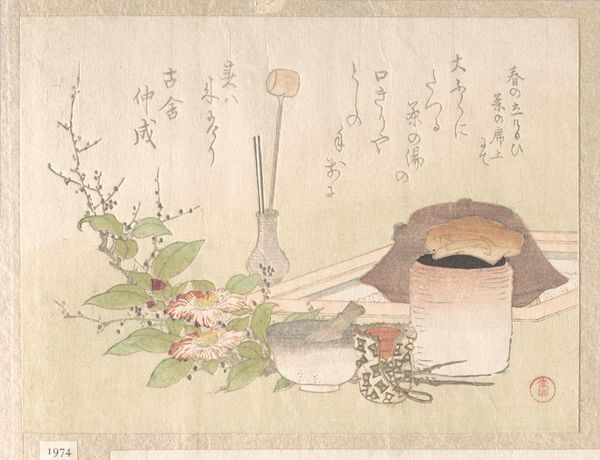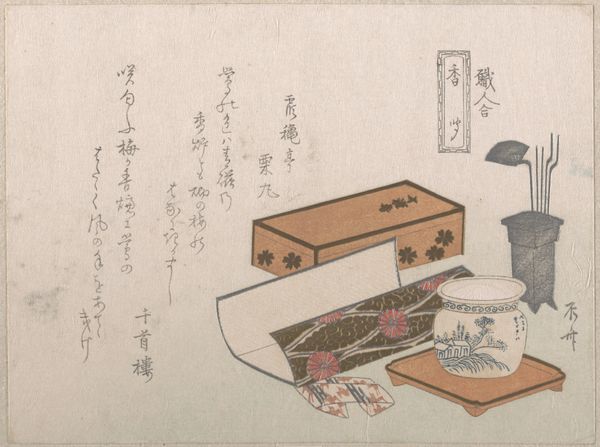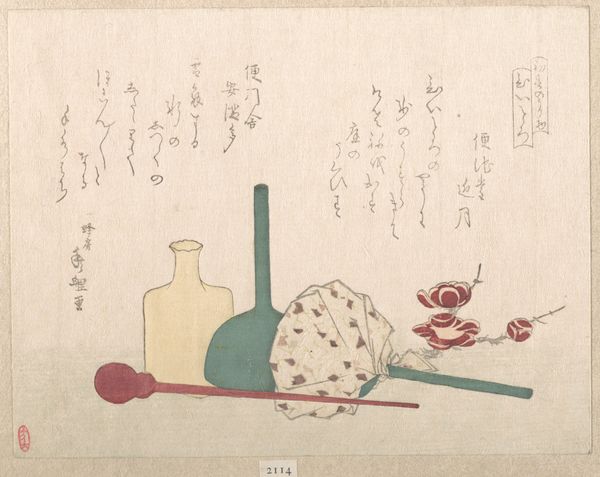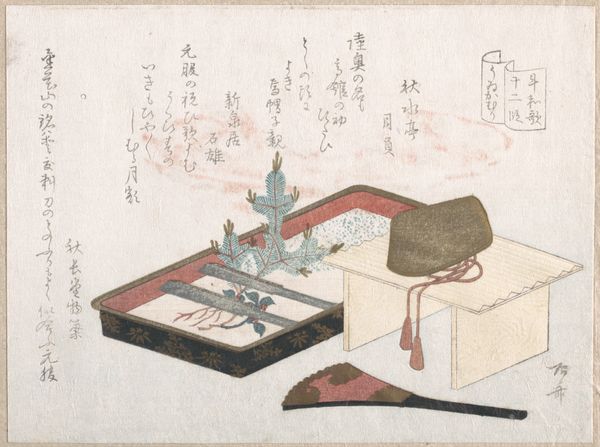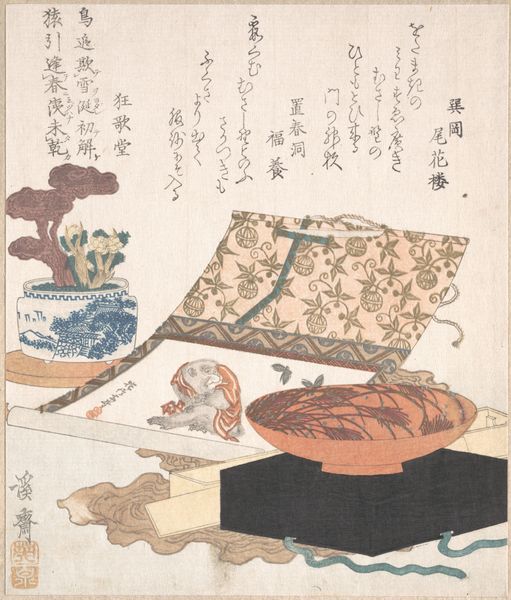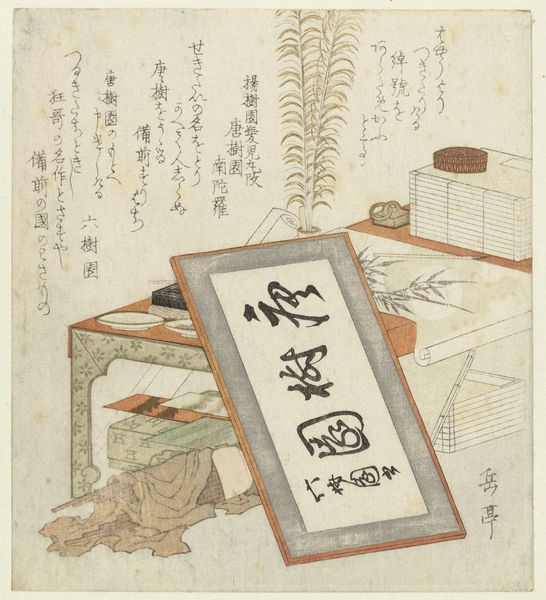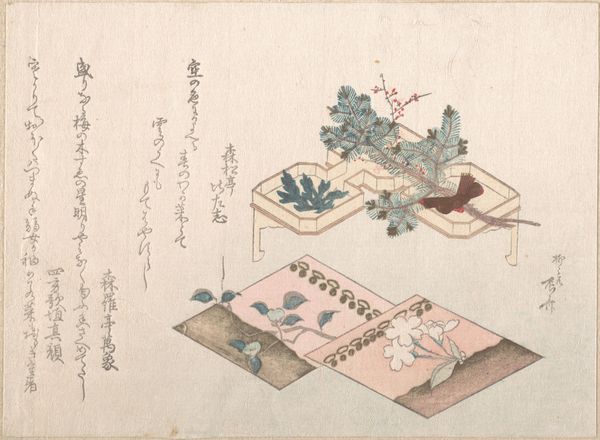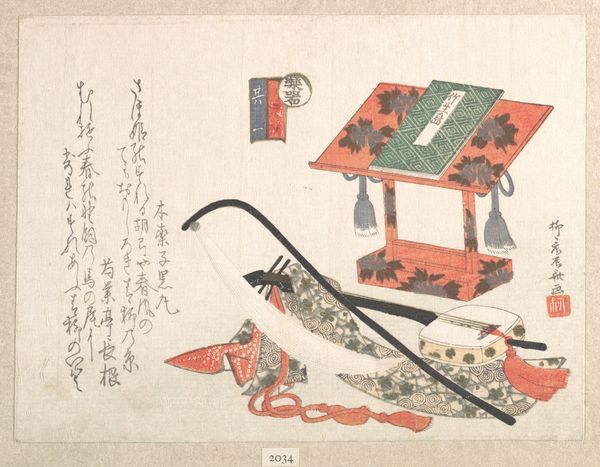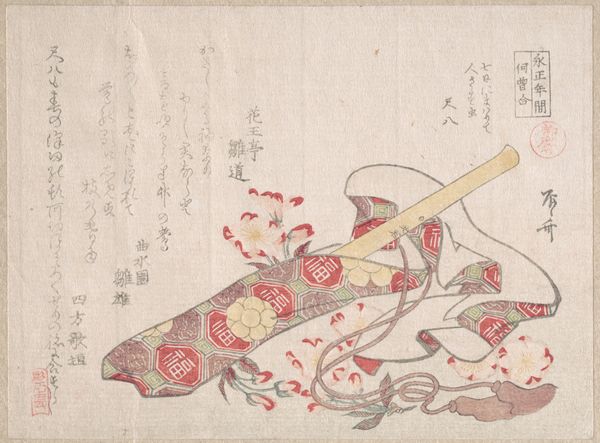
Kitchen Utensils with Greens for the Ceremony on January 7th 1768 - 1868
0:00
0:00
# print
#
asian-art
#
ukiyo-e
Dimensions: 5 3/8 x 7 3/8 in. (13.7 x 18.7 cm)
Copyright: Public Domain
Editor: Here we have “Kitchen Utensils with Greens for the Ceremony on January 7th,” a print by Hachifusa Shūri, created sometime between 1768 and 1868. It strikes me as a surprisingly intimate still life. The ordinary objects take center stage. How would you interpret this work within its historical context? Curator: It's essential to consider the "ukiyo-e" tradition. This genre, meaning "pictures of the floating world," often depicted fleeting pleasures and everyday life, making art accessible. Why do you think the artist chose these particular kitchen utensils and greens? Editor: I suppose they are objects of everyday rituals, made special in light of the Shogatsu celebrations? I notice that even the signature resembles a ritual stamp... Curator: Precisely! The greens relate to the "nanakusa-gayu" ritual porridge, consumed on January 7th for health and longevity. In portraying these specific elements, Shūri reflects the cultural importance of food and ritual within Japanese society. Note how it gives significance to objects easily ignored: elevating the everyday via prints. These prints served to solidify cultural memory, making rituals public knowledge. Considering this, do you feel that museums enhance or restrict how these artifacts function culturally? Editor: I'm seeing a push and pull: making art publicly available, while changing how people encounter it. How about you? Do you see it as restrictive or enabling? Curator: The question highlights art's complex, evolving function. Museums shape perception and reinforce some values above others. But it allows wider reach too. Editor: This discussion helped me understand more about Shūri's work in relation to its broader cultural function. Thanks! Curator: And I better recognize the power of these objects as active artifacts and cultural markers.
Comments
No comments
Be the first to comment and join the conversation on the ultimate creative platform.
